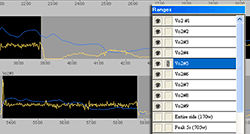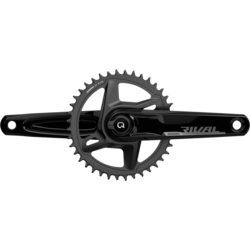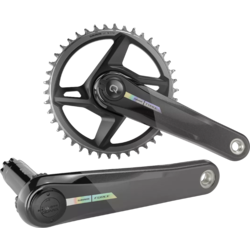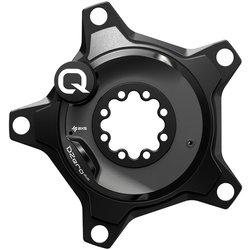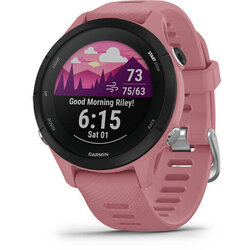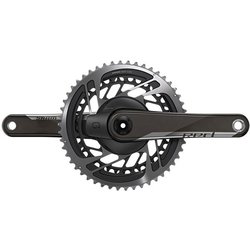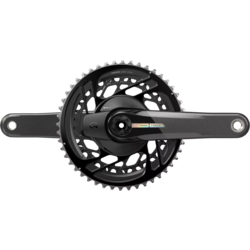Learn More About Watt Meters
 |
Traditional Technology Watts Are Better Watts Defined Great For Any Rider Show And Tell |
|
| Watts Are Better Watts are better for a number of reasons, including:
|
Watts are objective, not dependent on the varying factors of your body or the weather. If you held 305 watts for 30 minutes on April 8, and then you churned out 318 watts for a 30-minute period a month later, you know you are improving. Finally, you'll be able to track your fitness and improvement over a wide array of new levels. If you've enjoyed measuring your average speed on your favorite courses, you'll love being able to measure effort, calories, time in various zones, the intensity factor of the ride and much more. TSS takes IF into account to provide an even better big-picture measurement of training stress. By taking IF and duration into account, TSS can be used to quantify your overall training load. By then gradually increasing TSS for several weeks and dropping it during rest weeks, you can pinpoint overload training like never before. Or, if serious training isn't your goal, you'll be able to gauge fatigue like never before. If you have trouble sleeping or find yourself snapping at your relatives, a quick check of TSS will show you if overtraining is to blame. |
Traditional Technology Watts Are Better Watts Defined Great For Any Rider Show And Tell |

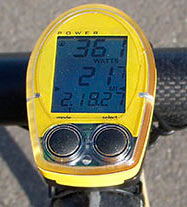 Power meters, which have now become almost standard equipment for professionals and any cyclist or triathlete interested in improving, solve cycling's subjective problem, the inability to account for outside forces. They track wattage, an objective, accurate measurement of energy output in the face of all resisting forces, to measure fitness and effort in a way that no heart-rate monitor or basic cyclo-computer can. And, the resulting data (power meters include software for downloading and analyzing ride data) is essential for effective training as well as informative and fun—even for cyclists without specific goals.
Power meters, which have now become almost standard equipment for professionals and any cyclist or triathlete interested in improving, solve cycling's subjective problem, the inability to account for outside forces. They track wattage, an objective, accurate measurement of energy output in the face of all resisting forces, to measure fitness and effort in a way that no heart-rate monitor or basic cyclo-computer can. And, the resulting data (power meters include software for downloading and analyzing ride data) is essential for effective training as well as informative and fun—even for cyclists without specific goals.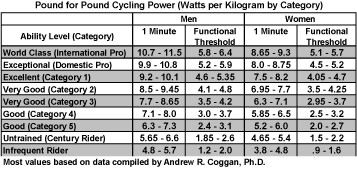
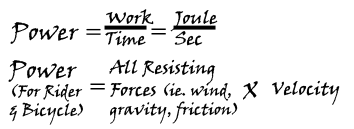 Power, or the energy produced in a given time frame, is scientifically expressed as a measure of intensity known as a watt. A watt is equal to 1 joule per second. A joule is the derived unit needed to accelerate a mass of one kilogram, one newton of force over a distance of one meter. So when you look at the wattage field of your power meter, you're seeing the total amount of energy needed to move your body's mass (x number of kg) against the resisting factors in a given moment. You're seeing an immediate, scientifically accurate measure of your effort.
Power, or the energy produced in a given time frame, is scientifically expressed as a measure of intensity known as a watt. A watt is equal to 1 joule per second. A joule is the derived unit needed to accelerate a mass of one kilogram, one newton of force over a distance of one meter. So when you look at the wattage field of your power meter, you're seeing the total amount of energy needed to move your body's mass (x number of kg) against the resisting factors in a given moment. You're seeing an immediate, scientifically accurate measure of your effort.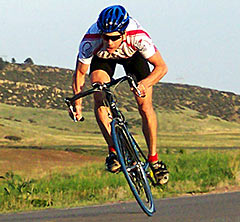 The same intervals would be nearly impossible with a heart-rate monitor because of heart-rate lag. As your muscles begin pushing at a difficult level of resistance, it takes your heart a while to realize that it needs to supply oxygenated blood to the area in question. By the time you've completed 30 seconds, your heart rate might still be 3 to 15 beats below your time-trial heart rate simply because it hasn't caught up. So how do you know you completed the interval at the correct intensity level? You don't. You could have ridden at a much easier threshold level, hammered along at an excessive sprint pace or, most likely, mixed the two.
The same intervals would be nearly impossible with a heart-rate monitor because of heart-rate lag. As your muscles begin pushing at a difficult level of resistance, it takes your heart a while to realize that it needs to supply oxygenated blood to the area in question. By the time you've completed 30 seconds, your heart rate might still be 3 to 15 beats below your time-trial heart rate simply because it hasn't caught up. So how do you know you completed the interval at the correct intensity level? You don't. You could have ridden at a much easier threshold level, hammered along at an excessive sprint pace or, most likely, mixed the two. 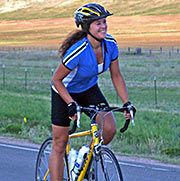 Calorie measurement ability is another reason we think a power meter is a great tool for any rider. Simply put, the power meter is a more objective measurement of your body's effort than almost any other tool. Because you know how many calories you've spent, you can adjust your intake accordingly. And, when you realize how much effort it takes to burn 50 kilojoules, the equivalent of one Oreo cookie, you'll think twice about eating it. You now have the artillery to win your personal battle of the bulge.
Calorie measurement ability is another reason we think a power meter is a great tool for any rider. Simply put, the power meter is a more objective measurement of your body's effort than almost any other tool. Because you know how many calories you've spent, you can adjust your intake accordingly. And, when you realize how much effort it takes to burn 50 kilojoules, the equivalent of one Oreo cookie, you'll think twice about eating it. You now have the artillery to win your personal battle of the bulge. 